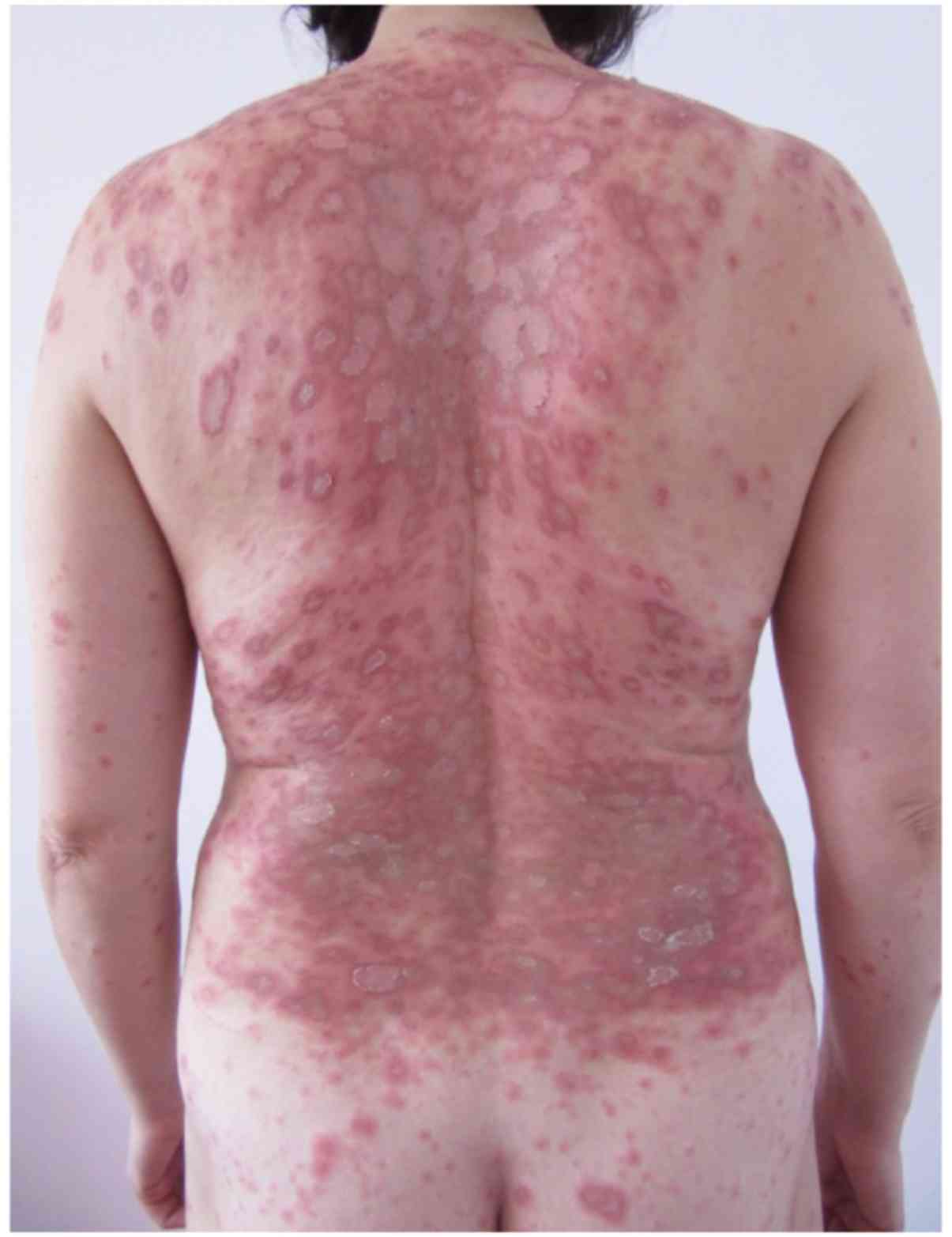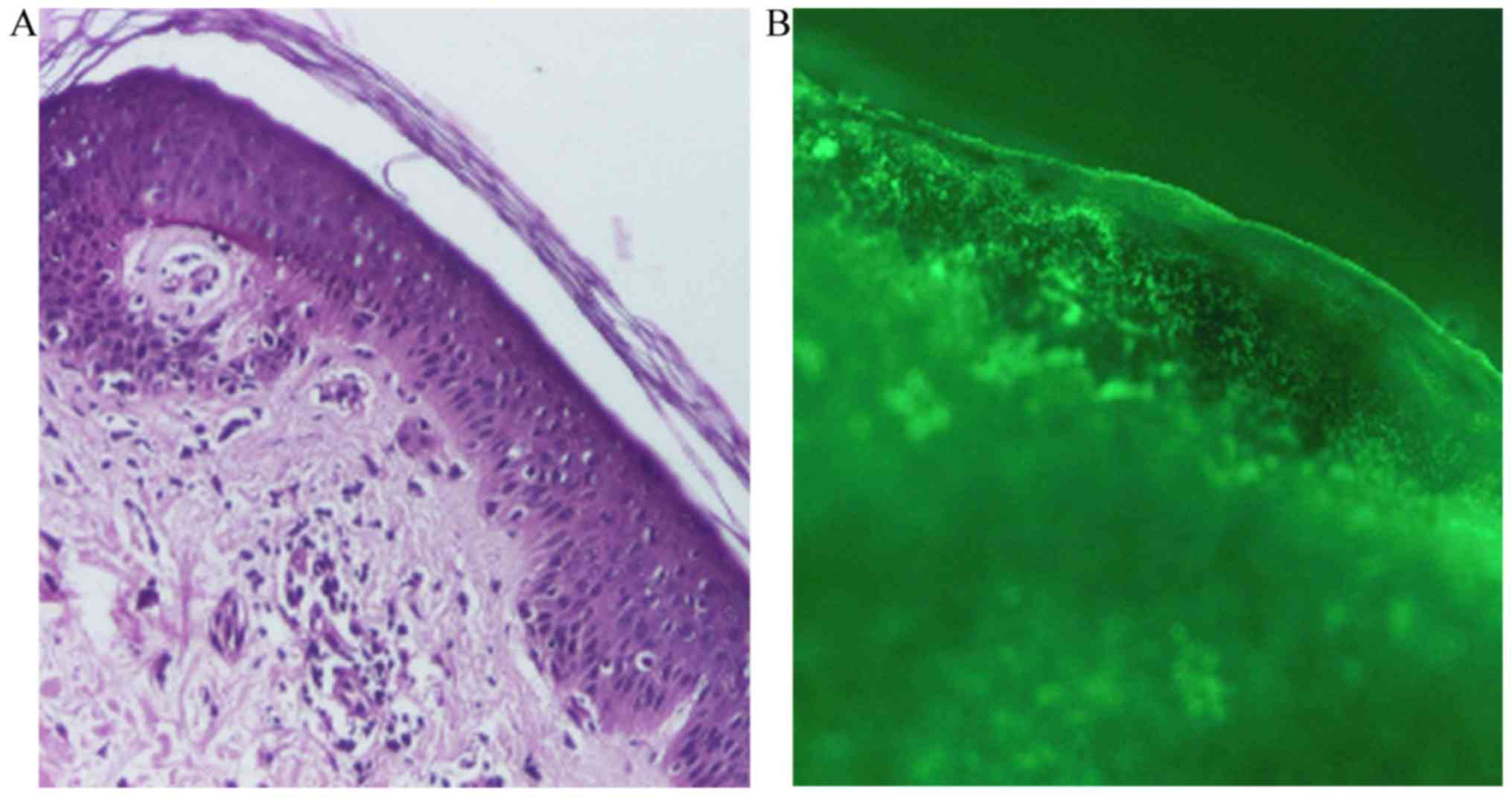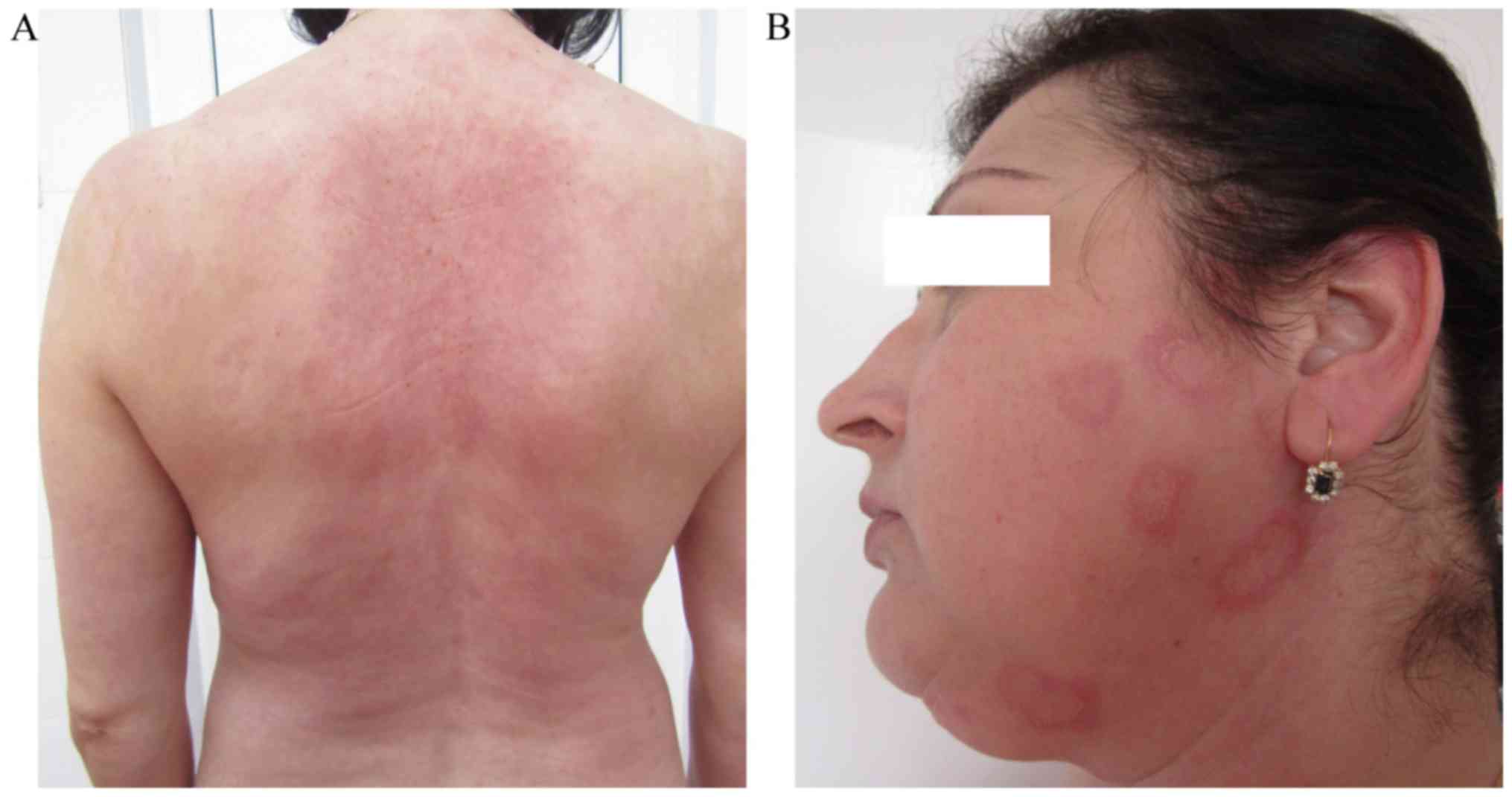|
1
|
Kumar Y, Bhatia A and Minz RW: Antinuclear
antibodies and their detection methods in diagnosis of connective
tissue diseases: A journey revisited. Diagn Pathol. 4:12009.
View Article : Google Scholar : PubMed/NCBI
|
|
2
|
Borque L, Barozzi D and Ferrari L: The
determination of rhematoid factors by an immunoturbidimetric assay
on boehringer mannheim/hitachi analysis systems. Klin Lab.
40:445–453. 1994.
|
|
3
|
Yachoui R and Cronin P: Systemic lupus
erythematosus associated with erythema multiforme-like lesions.
Case Rep Rheumatol. 2013:2121452013.PubMed/NCBI
|
|
4
|
Bhat RY, Varna C, Bhatt S and Balachandran
C: Rowell syndrome. Indian Dermatol Online J. 5 Suppl 1:S33–S35.
2014. View Article : Google Scholar : PubMed/NCBI
|
|
5
|
Aydin F, Senturk N, Yuksel EP, Yildiz L,
Canturk T and Turanli AY: Systemic lupus erythematosus with an
erythema multiforme-like lesions. Indian J Dermatol. 52:56–58.
2007. View Article : Google Scholar
|
|
6
|
Solanki D, Dalal E and Darji N: Case
report of Rowell's Syndrome. Int J Sci Res. 3:7–8. 2014.
|
|
7
|
Rowell NR, Beck JS and Anderson JR: Lupus
eythematosus and erythema multiforme-like lesions. A syndrome with
characteristic immunological abnormalities. Arch Dermatol.
88:176–180. 1963. View Article : Google Scholar : PubMed/NCBI
|
|
8
|
Antiga E, Caproni M, Bonciani D,
Bonciolini V and Fabbri P: The last word on the so-called ‘Rowell's
syndrome’? Lupus. 21:577–585. 2012. View Article : Google Scholar : PubMed/NCBI
|
|
9
|
Lee S, Schloss E and Kowichi J: Rowell's
syndrome: A case report with subacute cutaneous lupus erythematosus
and erythema multiforme. Can J Dermatol. 7:807–810. 1995.
|
|
10
|
Zeitouni NC, Funaro D, Cloutier RA, Gagné
E and Claveau L: Redefining Rowell's syndrome. Brit J Dermatol.
142:343–346. 2000. View Article : Google Scholar
|
|
11
|
Lee A, Batra P, Furer V, Cheung W, Wang N
and Franks A Jr: Rowell syndrome (systemic lupus
erythematosus+erythema multiforme). Dermatol Online J.
15:12009.PubMed/NCBI
|
|
12
|
Andronache IT, Suta C, Ionescu C,
Calistrat A and Suta M: Rowell syndrome-a controversial clinical
entity. Rom J Rhematol. 24:230–234. 2015.
|
|
13
|
Creţu A, Dimitriu A, Brănişteanu D and
Brinişteanu DE: Erythema multiforme-etiopathogenic, clinical and
therapeutic aspects. Rev Med Chir Soc Med Nat Iasi. 119:55–61.
2015.PubMed/NCBI
|
|
14
|
Wolff K, Goldsmith LA, Katz S, Gilchrest
BA, Paller AS and Leffell D: Fitzpatrik's Dermatology in General
Medicine. 7th. USA: pp. 376–384. 2008
|
|
15
|
Branisteanu DE, Labontu A, Ciobanu D,
Stoleriu G, Branisteanu DC and Oanta A: Possible progression of
subacute lupus erythematosus-case report. Rev Med Chir Soc Med Nat.
118:381–386. 2014.
|
|
16
|
Gu Y, Zhu T, Wang Y and Xu H: Systemic
lupus erythematosus with intestinal perforation: A case report. Exp
Ther Med. 10:1234–1238. 2015. View Article : Google Scholar : PubMed/NCBI
|
|
17
|
Zhang B, Shi Y and Lei TC: Detection of
active P-glucoprotein in systemic lupus erythematosus patients with
poor disease control. Exp Ther Med. 4:705–710. 2012. View Article : Google Scholar : PubMed/NCBI
|
|
18
|
Rao L, Liu G, Li C, Li Y, Wang Z, Zhou Z,
Tong S and Wu X: Specificity of anti-SSB as a diagnostic marker for
the classification of systemic lupus erythematosus. Exp Ther Med.
5:1710–1714. 2013. View Article : Google Scholar : PubMed/NCBI
|
|
19
|
Saurat JH, Lachapelle JM, Lipsker D and
Thomas D: Dermatologie et infections sexuellement transmissibles.
5th. Ed Tsunami; France: pp. 346–353. 2009
|
|
20
|
Burns T, Breathnach S, Copz N and
Griffiths C: Rook's Textbook of Dermatology. eighth. Blackwell
Publishing; USA: 51. pp. 22010
|
|
21
|
Zhu X, Li F, Yang B, Liang J, Qin H and Xu
J: Effects of ultraviolet B exposure on DNA methylation in patients
with systemic lupus erythematosus. Exp Ther Med. 5:1219–1225. 2013.
View Article : Google Scholar : PubMed/NCBI
|
|
22
|
Brănişteanu DE, Molodoi AD, Stătescu L,
Petrescu Z, Vasiluţ D, Anisiei E, Ferariu D and Brănişteanu D:
Chilblain lupus in an adolescent. Rev Med Chir Soc Med Nat Iasi.
112:646–651. 2008.(In Romanian). PubMed/NCBI
|
|
23
|
Xiao B and Zuo X: Epigenetics in systemic
lupus erythematosus. Biomed Rep. 4:135–139. 2016. View Article : Google Scholar : PubMed/NCBI
|
|
24
|
Kempf W, Hantschke M, Kutzner H and
Burgdorf WHC: Dermatopathology. Steinkopff Verlag; Germany: pp.
662008
|
|
25
|
Bonsmann G, Schiller M, Luger TA and
Ständer S: Terbinafine-induced subacute cutaneous lupus
erythematosus. J Am Acad Dermatol. 44:925–931. 2001. View Article : Google Scholar : PubMed/NCBI
|

















